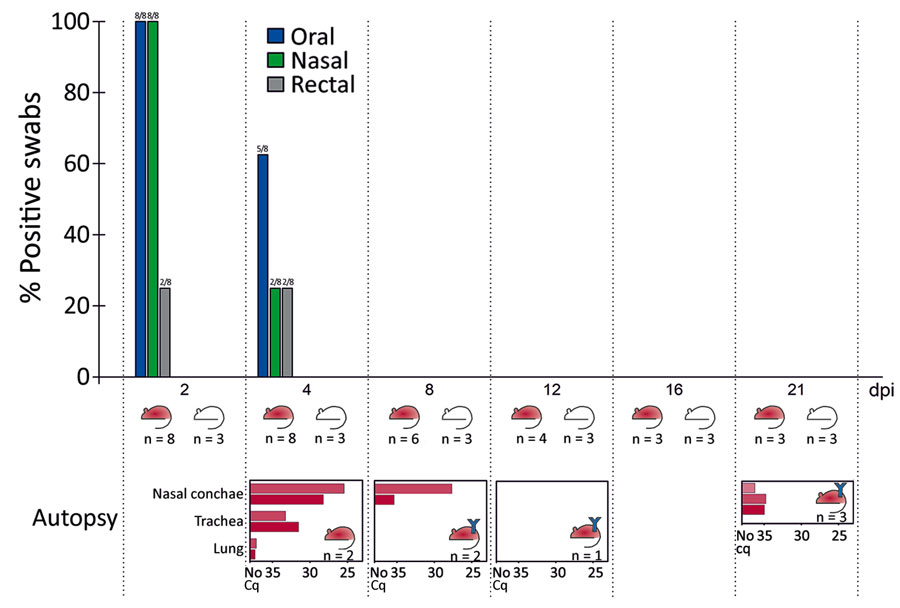Volume 27, Number 4—April 2021
Research Letter
Experimental SARS-CoV-2 Infection of Bank Voles
Figure

Figure. Percentage of SARS-CoV-2–positive swab specimens on all sampling time points in experimental SARS-CoV-2 infection of bank voles. The red mouse symbols symbolize inoculated bank voles; the white mouse symbols represent co-housed contact bank voles. Blue Y symbols stand for detected antibodies against SARS-CoV-2 in the respective bank vole group. Quantitative reverse transcription PCR results for the sampled organs of the euthanized, inoculated bank voles are given below the main chart for each time point. Cq, quantification cycle; dpi, days postinoculation; n, number of bank voles; SARS-CoV-2, severe acute respiratory syndrome coronavirus 2.
1These authors contributed equally to this article.
Page created: January 25, 2021
Page updated: March 18, 2021
Page reviewed: March 18, 2021
The conclusions, findings, and opinions expressed by authors contributing to this journal do not necessarily reflect the official position of the U.S. Department of Health and Human Services, the Public Health Service, the Centers for Disease Control and Prevention, or the authors' affiliated institutions. Use of trade names is for identification only and does not imply endorsement by any of the groups named above.